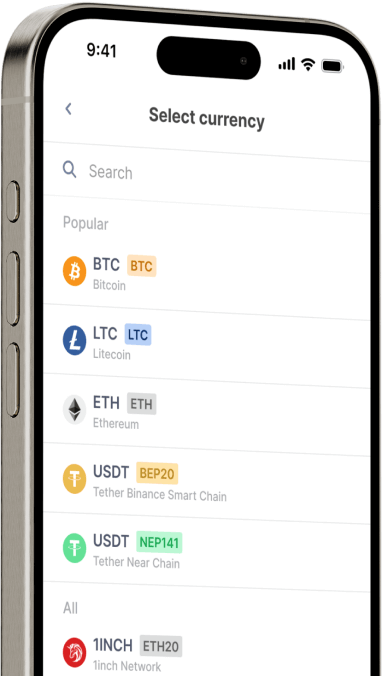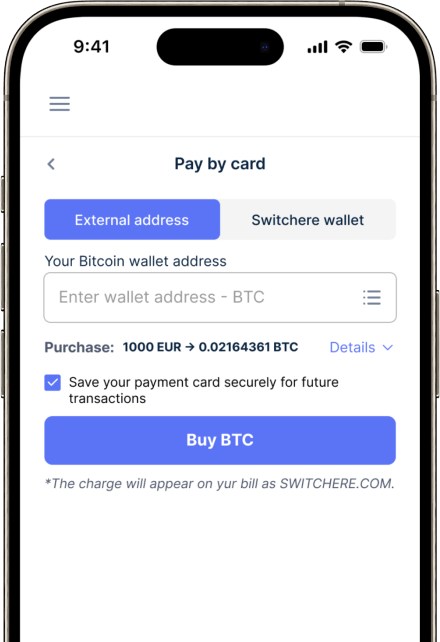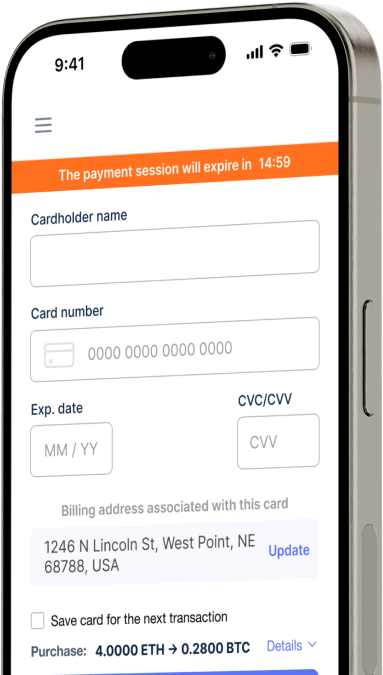Convertire
Turkish lira (TRY) in Polkadot (DOT) istantaneamente
Acquistate facilmente Polkadot (DOT) con Turkish lira (TRY) su Switchere e beneficiate di transazioni rapide e sicure.
Circa
Polkadot (DOT)
Polkadot (DOT) si presenta come un protocollo blockchain di nuova generazione, progettato per facilitare la comunicazione e l'interoperabilità cross-chain senza precedenti all'interno di un'architettura scalabile, sicura e multi-chain. Il suo scopo principale è quello di consentire a diverse blockchain, note come parachain, di scambiare informazioni e transazioni in modo affidabile. In questo modo si affronta l'importante problema della segregazione delle blockchain, in cui le singole reti operano in modo isolato. La tecnologia di base di Polkadot ruota attorno a una Relay Chain centrale, che fornisce sicurezza e consenso condivisi alle parachain collegate. Queste paracatene possono essere personalizzate per casi d'uso specifici, costruite utilizzando il framework flessibile Substrate, favorendo un ecosistema diversificato di catene specializzate.
Il token nativo DOT svolge diversi ruoli cruciali all'interno di questo ecosistema di asset digitali. Viene utilizzato per la governance della rete, consentendo ai titolari di partecipare al processo decisionale relativo agli aggiornamenti del protocollo e alle allocazioni del tesoro. Il DOT è anche essenziale per l'impilamento all'interno del meccanismo di consenso NPoS (Nominated Proof-of-Stake) di Polkadot, in cui i nominatori sostengono i validatori per proteggere la rete e guadagnare ricompense. Inoltre, i token DOT sono vincolati dai progetti per affittare slot paracadute attraverso un meccanismo d'asta, consentendo loro di connettersi alla Relay Chain e di beneficiare delle sue caratteristiche di sicurezza e interoperabilità in pool. Questo modello di tokenomics assicura la partecipazione attiva e l'allineamento con la salute a lungo termine della rete, posizionando Polkadot come infrastruttura Web3 fondamentale per un sistema di libro mastro digitale realmente interconnesso.
Acquistare altre 150+ criptovalute per Turkish lira (TRY)
Altre monete per Turkish lira (TRY)
-
TRY per ZRX
-
TRY per 1INCH
-
TRY per AAVE
-
TRY per ACH
-
TRY per ALGO
-
TRY per TLM
-
TRY per ANKR
-
TRY per APE
-
TRY per NFT
-
TRY per API3
-
TRY per APT
-
TRY per ARPA
-
TRY per AUDIO
-
TRY per AVAX
-
TRY per AVAX
-
TRY per AXS
-
TRY per BADGER
-
TRY per BAL
-
TRY per BNT
-
TRY per BAT
-
TRY per BNB
-
TRY per BSW
-
TRY per BSV
-
TRY per BLUR
-
TRY per BONE
-
TRY per CTSI
-
TRY per CELR
-
TRY per CELO
-
TRY per CEL
-
TRY per LINK
-
TRY per CHZ
-
TRY per CHR
-
TRY per C98
-
TRY per COMP
-
TRY per CFX
-
TRY per PEOPLE
-
TRY per CVX
-
TRY per ATOM
-
TRY per CTC
-
TRY per CRV
-
TRY per DAI
-
TRY per DASH
-
TRY per MANA
-
TRY per DENT
-
TRY per DGB
-
TRY per DYDX
-
TRY per XEC
-
TRY per EOS
-
TRY per ETC
-
TRY per ENS
-
TRY per ETHW
-
TRY per FET
-
TRY per FIL
-
TRY per FLOKI
-
TRY per GALA
-
TRY per GNO
-
TRY per ONE
-
TRY per HBAR
-
TRY per HOT
-
TRY per HOOK
-
TRY per ICX
-
TRY per ILV
-
TRY per IMX
-
TRY per INJ
-
TRY per ICP
-
TRY per IOST
-
TRY per IOTX
-
TRY per JASMY
-
TRY per JST
-
TRY per KAVA
-
TRY per KCS
-
TRY per KSM
-
TRY per KNC
-
TRY per LDO
-
TRY per LQTY
-
TRY per LPT
-
TRY per LOOKS
-
TRY per LRC
-
TRY per LUNA
-
TRY per MKR
-
TRY per MASK
-
TRY per EGLD
-
TRY per ALICE
-
TRY per NEAR
-
TRY per XEM
-
TRY per NEXO
-
TRY per NOT
-
TRY per NMR
-
TRY per OKB
-
TRY per OMG
-
TRY per ONT
-
TRY per EDU
-
TRY per OP
-
TRY per OGN
-
TRY per CAKE
-
TRY per PAXG
-
TRY per PENDLE
-
TRY per DOT
-
TRY per POL
-
TRY per QTUM
-
TRY per QNT
-
TRY per RDNT
-
TRY per XRD
-
TRY per RVN
-
TRY per REN
-
TRY per RSR
-
TRY per RLC
-
TRY per RPL
-
TRY per SFP
-
TRY per SHIB
-
TRY per SKL
-
TRY per SXP
-
TRY per STND
-
TRY per STG
-
TRY per XLM
-
TRY per GMT
-
TRY per STORJ
-
TRY per STMX
-
TRY per SUSHI
-
TRY per SNX
-
TRY per USDT (Polygon)
-
TRY per USDT (AVAC)
-
TRY per USDT (BEP20)
-
TRY per USDT (ERC20)
-
TRY per USDT (SPL)
-
TRY per USDT (NEP141)
-
TRY per USDT (FA2)
-
TRY per USDT (TRC20)
-
TRY per USDT (JETTON)
-
TRY per XTZ
-
TRY per GRT
-
TRY per SAND
-
TRY per TFUEL
-
TRY per THETA
-
TRY per RUNE
-
TRY per TON
-
TRY per TUSD (BEP20)
-
TRY per TUSD (TRC20)
-
TRY per TWT
-
TRY per UOS
-
TRY per UMA
-
TRY per UNI
-
TRY per USDC (Polygon)
-
TRY per USDC (SPL)
-
TRY per USDC (OP)
-
TRY per USDC (BEP20)
-
TRY per USDC (AVAC)
-
TRY per USDC (ARB)
-
TRY per USDC (ERC20)
-
TRY per VET
-
TRY per VRA
-
TRY per WAXP
-
TRY per WOO
-
TRY per WLD
-
TRY per WBTC
-
TRY per WMINIMA
-
TRY per XDC
-
TRY per YFI
-
TRY per YGG
-
TRY per ZIL
Come acquistare gli Polkadot (DOT)
Domande frequenti
-
Quali sono i metodi più comuni per acquistare Polkadot (DOT) con la Lira Turca (TRY)?
Il metodo più comune è utilizzare un exchange di criptovalute che offre una coppia di trading diretta TRY/DOT. Gli utenti in genere creano un account, completano la verifica KYC/AML conforme alle normative MASAK e quindi depositano TRY tramite bonifico bancario locale (Havale/EFT) o altri servizi di pagamento supportati come Papara. Ciò fornisce un on-ramp fiat diretto per acquisire DOT senza conversioni di valuta intermedie.
-
Quali misure di sicurezza dovrei adottare dopo una transazione da TRY a DOT?
Dopo aver acquistato DOT su un exchange, si consiglia vivamente di trasferire i propri asset digitali su un portafoglio digitale personale e non-custodial per una conservazione e un trading sicuri. Per Polkadot, si tratterebbe di un portafoglio basato sul framework Substrate. Abilita sempre l'autenticazione a due fattori (2FA) sul tuo account dell'exchange e fai attenzione ai tentativi di phishing. Non condividere mai le tue chiavi private o la tua frase seed.
-
Ci sono strutture di commissioni specifiche da considerare quando si scambia TRY con DOT?
Sì. Gli exchange hanno in genere una struttura di commissioni di trading a scaglioni basata sul volume di trading a 30 giorni, spesso utilizzando un modello maker-taker. Inoltre, potrebbe esserci una commissione di deposito per i TRY, sebbene i bonifici bancari locali siano spesso a basso costo. Infine, quando prelevi i tuoi DOT su un portafoglio digitale esterno, incorrerai in una commissione di transazione blockchain, che è un costo di rete standard per proteggere la transazione sulla Relay Chain di Polkadot.
-
Perché acquisire DOT è fondamentale per partecipare all'ecosistema Polkadot?
DOT è l'asset digitale nativo della rete Polkadot. Svolge tre funzioni chiave: governance della rete, funzionamento tramite staking con il suo meccanismo Nominated Proof-of-Stake (NPoS) e bonding per la creazione di nuove parachain. Possedere DOT è essenziale per votare sulle proposte, proteggere la Relay Chain tramite lo staking o partecipare ai crowdloan delle parachain per sostenere nuovi progetti che mirano all'interoperabilità cross-chain.
-
Cos'è un 'crowdloan di una parachain' e in che modo il mio acquisto di TRY a DOT può facilitarne la partecipazione?
Un crowdloan di una parachain è un metodo con cui i progetti basati sul framework Substrate raccolgono DOT dalla community per fare un'offerta per uno slot sulla Relay Chain di Polkadot. Convertendo i tuoi TRY in DOT, puoi quindi 'prestare' i tuoi DOT alla campagna di un progetto. Se il progetto vince un'asta, i tuoi DOT vengono bloccati per il periodo di leasing e di solito ricevi i token nativi del progetto come ricompensa. Questo processo è parte integrante dell'espansione della rete e della governance on-chain.
-
In che modo il Nominated Proof-of-Stake (NPoS) di Polkadot si differenzia da altri modelli di staking?
Il NPoS di Polkadot è progettato per una maggiore sicurezza e decentralizzazione. A differenza di alcuni sistemi in cui dominano i validatori più ricchi, il NPoS consente ai detentori di DOT (nominatori) di sostenere fino a 16 validatori. Il sistema distribuisce quindi in modo efficiente gli stake tra i validatori scelti per creare un set attivo più equamente ponderato. Questo meccanismo aiuta a proteggere la Relay Chain consentendo a più partecipanti di guadagnare ricompense di staking dai loro possedimenti di asset digitali.




